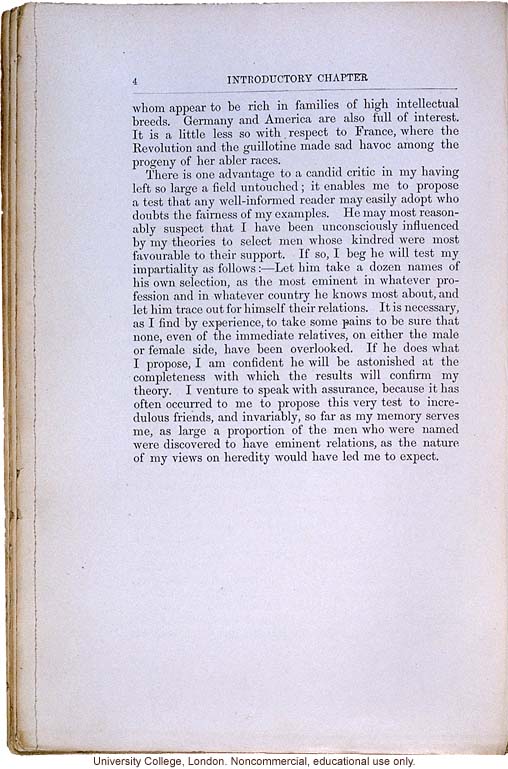4 Introductory Chapter
[hairline rule width of page]
whom appear to be rich in families of high intellectual breeds. Germany and America are also full of interest. It is a little less so with respect to France, where the Revolution and the guillotine made sad havoc among the progeny of her abler races.
There is one advantage to a candid critic in my having left so large a field untouched; it enables me to propose a test that any well-informed reader may easily adopt who doubts the fairness of my examples. He may most reasonably suspect that I have been unconsciously influenced by my theories to select men whose kindred were most favourable to their support. If so, I beg he will test my impartiality as follow: -- Let him take a dozen names of his own selection, as the most eminent in whatever profession and in whatever country he knows most about, and let him trace out for himself their relations. It is necessary, as I find by experience, to take some pains to be sure that none, even of the immediate relatives, on either the male or female side, have been overlooked. If he does what I propose, I am confident he will be astonished at the completeness with which the results will confirm my theory. I venture to speak with assurance, because it has often occurred to me to propose this very test to incredulous friends, and invariably, so far as my memory serves me, as large a proportion of the men who were named were discovered to have eminent relations, as the nature of my views on heredity would have led me to expect.
[end]


